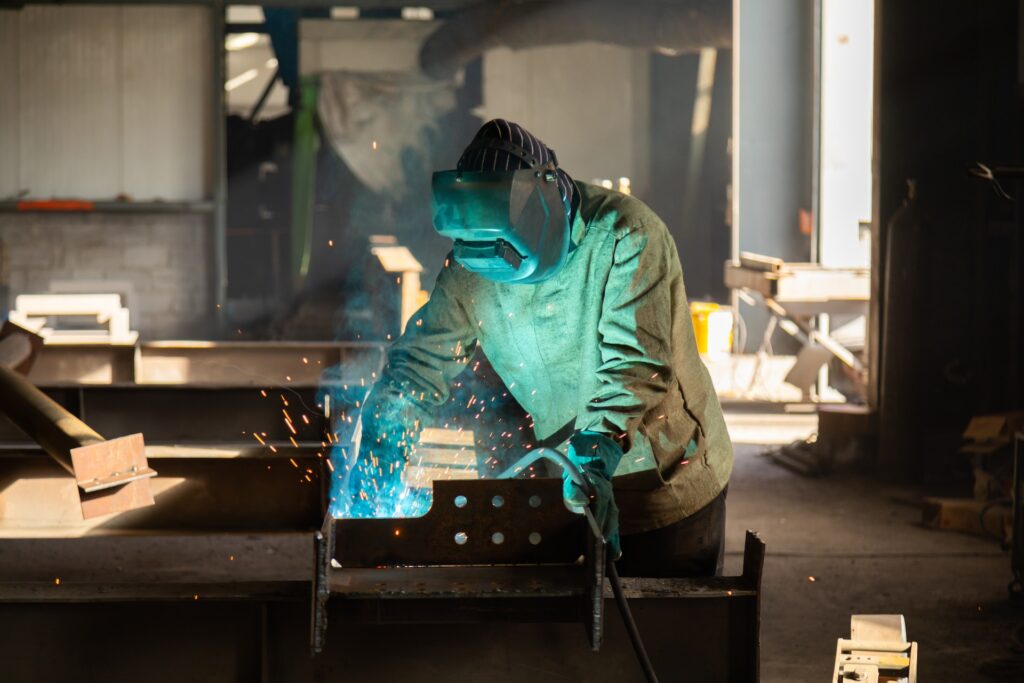Navigating the intricate world of welding apparel, one question often pops up: Are cotton shirts apt for the job? Welding, with its sparks and intense heat, demands more than just skill—it calls for appropriate attire.
While many sing praises of specialized welding shirts, a significant portion of welders gravitate towards cotton. In this honest review, we’ll dissect the merits and demerits of cotton shirts in a welding environment, challenging conventional wisdom with hard facts.
Let’s weld our way in!
What kind of shirt do you wear for welding?
In the high-intensity world of welding, choosing the right attire is as much about safety as it is about comfort. Welders are exposed to extreme temperatures, sparks, and potentially harmful ultraviolet and infrared rays.
As a result, the type of shirt worn during welding must not only shield the welder from these hazards but also be breathable and comfortable for extended periods of use.
Key Characteristics of a Welding Shirt:
- Flame-Resistant Material: Essential for protection against sparks and spatter.
- Full Sleeve Design: Offers protection to the arms from UV rays and hot metal.
- Tight Weave Fabric: Reduces the chance of spark penetration.
- Extended Tail: Helps keep the shirt tucked in during movements.
- High Collar: Shields the neck from sparks and UV radiation.
- No Synthetic Materials: These can melt onto the skin when exposed to heat.
The crux of the matter is, while many materials can be used for welding shirts, it’s imperative to prioritize safety and comfort.
What material should you not wear when welding?
Welding demands not just skill but also an acute sense of safety, especially when it comes to attire. The wrong choice of material can lead to severe injuries, as some fabrics can melt or even ignite when exposed to welding spatter and sparks.
It’s crucial to know which materials to avoid in order to ensure the utmost protection during the welding process.
Materials to Avoid When Welding:
- Polyester: Melts easily and can cause burns.
- Nylon: Highly flammable and melts upon heat exposure.
- Rayon: Combustible and melts when exposed to sparks.
- Spandex: Known to melt and stick to the skin.
- Vinyl: Melts easily, potentially causing severe skin burns.
- Acrylic: Can ignite and continue to burn even after the spark source is removed.
In essence, steering clear of synthetic fabrics is the rule of thumb. While natural fabrics, such as cotton, can still pose risks if not treated for flame resistance, synthetics are especially dangerous due to their tendency to melt and adhere to the skin, compounding potential injuries.
What are the Best Cotton Welder Shirts?
Cotton, revered for its comfort and heat-resistant properties, becomes a favorite for welders who prioritize safety without compromising on ease of movement and breathability.
Best Cotton Welder Shirts:
- Portwest Bizflame 88/12 Shirt: Flame-resistant with ARC2 protection and designed for comfort.
- Western Welder WW-1104BW: Boasts 100% cotton twill, blending style with functionality.
- K3113-2XL Lincoln Electric: Offers breathable light welding protection with 9 oz. 100% flame retardant material.
- Carhartt Twill Long-sleeve Plaid Shirt: Perfectly marries safety with style, boasting the Force technology to wick sweat and dry fast.
- LAPCO FR Welding Shirt | 9OZ: Recognized for its sturdy snaps and a comfortable finish with flame-resistant cotton twill.
Investing in the right gear is a testament to a welder’s commitment to both their craft and personal safety.
Is cotton or polyester better for welding?
When comparing cotton and polyester for welding applications, their differences in performance become starkly evident. Both materials possess unique properties, but the demands of welding dictate a clear favorite between the two.
Cotton vs. Polyester for Welding:
- Flammability: Cotton, being a natural fiber, chars but doesn’t melt. Polyester, however, can melt and drip, adhering to the skin and causing severe burns.
- Heat Resistance: Cotton has a higher ignition temperature and is more resistant to high-heat exposure. Polyester’s lower ignition point can be a hazard during welding operations.
- Breathability: Cotton is more breathable than polyester, which is essential to keep welders cool and comfortable during extended operations.
- Durability: While polyester generally offers more durability in regular wear, cotton’s resistance to melting makes it longer-lasting in welding conditions.
- Safety Standards: Cotton, especially when treated for flame resistance, meets many safety standards for welding attire. Polyester rarely, if ever, meets these criteria.
- Comfort: Cotton’s natural fibers provide more comfort, reducing the chances of heat-related discomfort or rashes, especially during longer welding tasks.
How to Choose the Right Welding Shirt for You?
Choosing the perfect cotton welder shirt hinges on your unique needs, budget, and preferences. While many options provide a mix of comfort and safety, it’s crucial to remember that these shirts should be part of a comprehensive safety regimen.
For in-depth analyses and recommendations, dive into our detailed guide on the Top 7 Best FR Welding Shirts for 2023. Ensure safety remains at the forefront of your welding endeavors!

